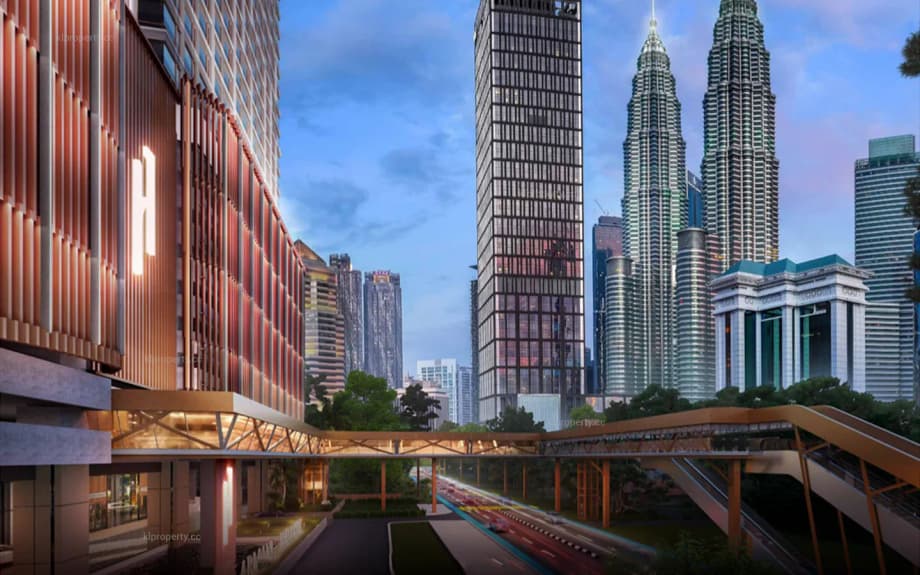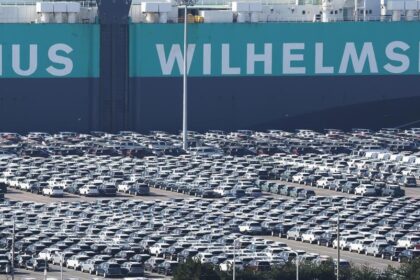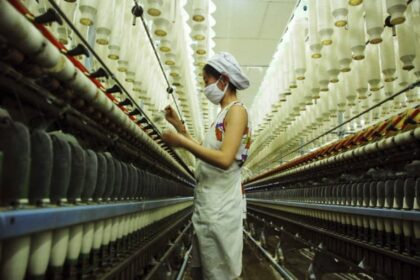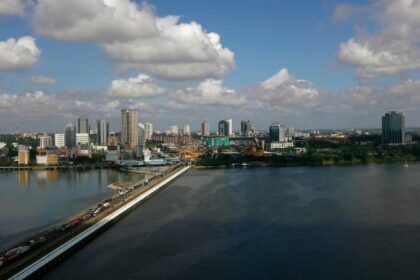A property divide takes shape in 2025
Malaysia’s property cycle has entered an uneven phase. Johor and Penang are gaining speed, lifted by cross border demand, factories and data center investment. Kuala Lumpur is slower, weighed by a high-rise overhang that built up during the last decade. National numbers confirm the split. In the first half of 2025 there were 196,232 property transactions, down 1.3 percent from a year earlier, while total value rose 1.9 percent to RM107.68 billion. Prices look stable even as sales cooled. The official data paints a soft patch, not a slump, and it is one with sharp regional contrasts.
The past year set the stage. In 2024 the residential market logged 260,516 transactions and RM106.92 billion in value. The national house price index increased by 1.4 percent, while inflation trimmed real gains. Average home prices ended 2024 at about RM483,879, with landed terrace units up modestly and high-rise prices edging higher on average, before a quarter on quarter dip in late 2024. Mortgage balances kept expanding and construction activity picked up. Early 2025 widened the gap between fast growing industrial hubs and city submarkets that still hold too much high-rise stock.
Across the country, buyers continued to favor affordability and existing homes. About six in ten transactions in the first half of 2025 were residential. Terraced houses remain the most traded segment. Homes priced at RM300,000 and below accounted for just over half of residential sales. The secondary market dominated activity, with close to four out of five homes changing hands from existing owners rather than fresh launches. Developers pared back new releases sharply, which should help clear unsold stock over time.
Where momentum is strongest
Johor and Penang captured much of the new demand. Both states sit at the heart of Malaysia’s production and logistics map. They also benefit from transport upgrades that shrink travel times and make cross border commuting easier.
Johor: Cross border magnet with an industrial tailwind
Johor has become the growth engine of 2025. The Johor Singapore Special Economic Zone is drawing manufacturers, digital infrastructure players and services firms. Industrial transactions and values rose, new residential launches led the country, and financing flowed into logistics and factories. Office and retail also improved from a low base in key corridors around Johor Bahru. In the first quarter of 2025, Johor’s residential transaction value jumped by about 14 percent. Demand spans landed homes for owner occupiers and apartments near transport nodes for renters who commute to Singapore.
Data center and advanced manufacturing plans are reinforcing that momentum. Global technology groups have expanded footprints in southern Malaysia, taking advantage of land availability, power access and proximity to Singapore. Market trackers report strong tenant interest for factories and warehouses across Johor, alongside Klang Valley and Penang. Low vacancies in modern industrial stock, rising pre commitments and a pipeline of parks near highways point to sustained activity.
Penang: Electronics cluster keeps real estate busy
Penang’s electronics and electrical ecosystem continues to support steady property demand on both the island and Seberang Perai. The industrial base in Batu Kawan has attracted multinational suppliers, which feeds demand for worker housing, logistics space and supporting retail. The state has kept high-rise demand relatively stable, though 2025 began with slight dips in apartment transactions and values. Penang’s office market held firm and retail occupancy hovered in the low seventies. Local authorities also rolled out a long horizon affordable housing plan, with tens of thousands of units to be delivered over the next decade using faster modular construction.
Kuala Lumpur’s two speed reality
The capital tells a different story. Residential activity slowed in early 2025, and the city still faces a sizable overhang of completed units. Unsold completed homes rose to about 26,911 units nationwide in the first half, with more than half in condominiums and apartments. In Kuala Lumpur, high-rise oversupply remains the main drag on absorption. Home prices in the city rose by a little over 3 percent year on year in the first quarter of 2025, yet transactions fell by nearly 9 percent, a sign that buyers are selective and incentives matter.
Commercial real estate is faring better. Office leasing strengthened as companies upgraded to newer, greener towers. Across Kuala Lumpur, net absorption turned positive in every submarket in the second quarter of 2025, helping push the citywide vacancy rate down from roughly 24 percent a year earlier to about 19 percent. New completions in prime precincts added high quality space, while several large projects brought forward target completion to 2026.
JLL Malaysia, which tracks office leasing across the city, described the second quarter as a turning point.
Kuala Lumpur’s office market showed resilience, with positive absorption across all submarkets.
Retail showed measured gains. Vacancies declined compared with mid 2024, food and fashion brands continued to expand, and entertainment and coworking tenants helped backfill space from a few high profile closures. Two landmark malls, including 118 Mall and a new project near KLCC, are scheduled within the next year. Residential at the upper end saw better take up, helped by an interest rate cut earlier in 2025 and steady interest from buyers in the Middle East, Asia Pacific and Europe.
Prices and affordability in focus
Malaysia’s house price index edged higher into 2025. The national index stood around 227 points and the average price hovered near RM490,376 in the first half, up about 0.7 percent year on year. Price gains were uneven. Terraced homes posted modest increases. High-rise values slipped in several states where supply is heavy. Perlis and Johor saw the strongest recent gains among the smaller markets.
Affordability still sets the pace for sales. Properties at RM300,000 and below accounted for roughly 53 percent of residential transactions in the first half. Buyers favored existing neighborhoods with transport access, schools and jobs. That preference helped push the secondary market to nearly 80 percent of residential deals. Developers responded by launching fewer projects. New housing releases fell by about half year on year to 23,380 units in the first six months of 2025.
Markets with strong rental demand are drawing investors back, particularly where yields outpace borrowing costs. Average gross yields on apartments reached about 5.1 percent in early 2025, with Kuala Lumpur apartments at roughly 4.6 percent. Areas near universities, rail lines and jobs hubs continue to command the most stable rent growth.
Foo Gee Jen, past president of the Association of Valuers, Property Managers, Estate Agents and Property Consultants in the Private Sector Malaysia and an adviser at CBRE WTW, told an industry summit that measured price growth is healthier for the market than the spikes of a decade ago.
A 4% growth rate may not excite investors, but it is healthy and aligns with bank interest rates.
That view reflects a shift toward sustainable pricing. Rising construction costs are likely to pass through to selling prices in selected locations. The focus on real affordability also points to more targeted subsidies and better data to fine tune supply, rather than blanket incentives.
Industrial and data centers drive investment
The industrial segment is the clear bright spot of 2025. Transactions rose by about 8.5 percent to more than 4,100 deals in the first half, and total value climbed to roughly RM14.25 billion. Johor, Penang and Selangor led activity as logistics, automotive and electrical and electronics groups expanded. In Klang Valley alone, about 2 million square feet of new grade A warehouse space came on stream in the second quarter, yet vacancy fell sharply to near 2 percent as space was absorbed.
Capital values for modern sheds increased by close to 4 percent year on year. Tenants sought energy efficient buildings and locations with quick highway access. Some investors paused purchases amid tariff uncertainty and changing global supply chains, but occupier demand stayed firm across the main corridors.
Malaysia has also emerged as a major regional data center market. Installed capacity now exceeds 600 MW, with around 1,300 MW under construction and a future pipeline larger than 3,400 MW. The sector is maturing. Costs and approvals are tighter, and developers are forming partnerships to deliver power ready sites. That shift prioritizes quality, renewable energy access and long term grid resilience.
Knight Frank Malaysia, in its half year review of multiple sectors, captured both optimism and caution in a single line.
The market continues to demonstrate resilience despite global headwinds and increasing policy complexity.
Infrastructure and special zones shift demand
Transport projects and policy zones are reshaping property demand maps. The East Coast Rail Link moved past the 80 percent completion mark, with work nearing its final stages. The Pan Borneo Highway continues to improve access across Sabah and Sarawak. In the south, the Johor Singapore Special Economic Zone is accelerating investment approvals and supply chains, while the cross border RTS Link between Johor Bahru and Woodlands is under construction. These investments compress distances, lift tourism and trade, and feed demand for warehouses, hotels and homes.
Policy updates also highlight Johor’s role in investment attraction. By mid 2025, authorities linked to the special zone had approved more than RM37 billion of projects, with further commitments in the pipeline. The focus extends to aviation, with plans for an aero park in Selangor and a new highway interchange to unlock land in Negeri Sembilan. The net effect is stronger demand for industrial parks near new transport nodes and better prospects for nearby townships.
Policy changes and foreign buying
Malaysia restored a tiered Malaysia My Second Home program in mid 2024, widening options for long stay residents. Eligibility is linked to fixed deposits and property purchase thresholds, and requirements vary by tier. States continue to set minimum prices for foreign buyers, and these thresholds differ by location and market conditions.
Budget proposals for 2026 point to higher transaction costs for some foreign purchasers. The government has tabled a plan to lift stamp duties on property transfers by non citizens and foreign companies from 4 percent to as high as 8 percent. The impact on volumes is likely to be modest in the near term, since foreign buyers made up about 0.6 percent of residential transactions in 2024. Measures supporting local buyers partly offset this change. The full stamp duty exemption for first home purchases up to RM500,000 has been extended until the end of 2027.
Authorities also introduced a tax deduction for expenses tied to converting commercial buildings into housing. The aim is to revitalize aging urban precincts and increase supply in locations where demand for homes is persistent. Lenders continue to expand the housing loan book, and government credit guarantees help first time buyers and self employed borrowers who have viable income but limited documentation.
Risks that need managing
Supply mismatch is still the main risk in housing. Completed unsold homes climbed to nearly 27,000 units nationwide in the first half of 2025, concentrated in condominiums and serviced apartments. Counting units at earlier construction stages, unsold inventory across the pipeline stood above 43,000 units in early 2025, with a large value tied up in projects in suburban locations that lack transport and amenities. Developers responded with fewer launches, more right sized units and designs that meet actual local incomes.
The rental share of stock remains low by international standards, which limits options for mobile workers. Affordability pressures from living costs and wage growth gaps still weigh on first time buyers. Policy makers and industry leaders have urged more targeted social housing support and a common data platform to align supply with demand at the neighborhood level.
Industrial real estate faces its own set of guardrails. Power supply planning, electricity costs and talent shortages are live issues for data centers and advanced manufacturing. Some analysts caution that the data center pipeline is very large, and that demand and grid upgrades must keep pace to sustain yields. Even so, underlying industrial demand in the main corridors remains diverse and is less exposed to single sector shocks.
Key Points
- Malaysia logged 196,232 property transactions in the first half of 2025, down 1.3 percent, while value rose 1.9 percent to RM107.68 billion.
- Johor and Penang led activity, lifted by industrial growth, logistics and cross border demand linked to Singapore and global supply chains.
- Kuala Lumpur’s residential market slowed, with a large high-rise overhang. City home prices rose 3.2 percent year on year in the first quarter of 2025, but transactions fell 8.7 percent.
- KL office leasing improved. Vacancy fell to about 19 percent in the second quarter of 2025 from roughly 24 percent a year earlier, with positive absorption across all submarkets.
- Industrial real estate outperformed. First half industrial transactions rose about 8.5 percent to more than 4,100, with low vacancies in grade A warehouses.
- Malaysia’s data center market now exceeds 600 MW of live capacity, with about 1,300 MW under construction and a larger future pipeline.
- Affordability drives sales. Roughly 53 percent of residential transactions were at RM300,000 and below, and nearly 80 percent of deals were in the secondary market.
- New housing launches fell by roughly 50 percent year on year to 23,380 units in the first half, a move that should help clear unsold stock.
- Policy shifts include a tiered Malaysia My Second Home program and a proposal to raise stamp duty on foreign purchases, while first home stamp duty exemptions are extended to end 2027.
- Key projects like the East Coast Rail Link, the RTS Link and the Johor Singapore Special Economic Zone are shifting demand toward logistics, manufacturing and new township growth.
- Risks center on high-rise oversupply, power and talent constraints for industry, and the need to align new supply more closely with real local incomes.












